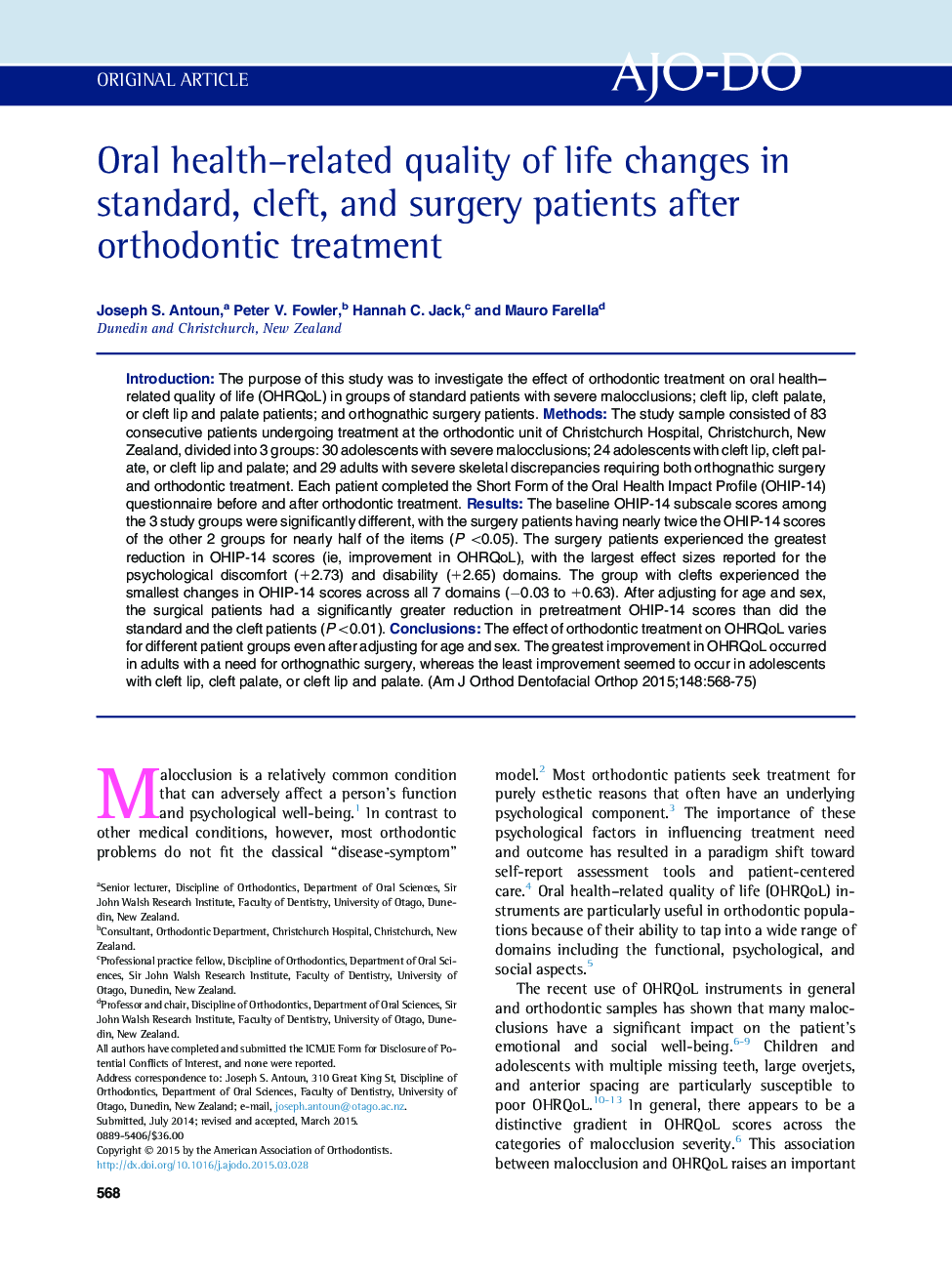| Article ID | Journal | Published Year | Pages | File Type |
|---|---|---|---|---|
| 3115862 | American Journal of Orthodontics and Dentofacial Orthopedics | 2015 | 8 Pages |
•Orthognathic surgery patients have relatively poor oral health–related quality of life (OHRQoL) before treatment.•Treatment-related changes in OHRQoL were mainly influenced by patient group.•Orthognathic surgery patients report the greatest improvement in OHRQoL after treatment.•Cleft patients have the least improvement in OHRQoL after orthodontic treatment.
IntroductionThe purpose of this study was to investigate the effect of orthodontic treatment on oral health–related quality of life (OHRQoL) in groups of standard patients with severe malocclusions; cleft lip, cleft palate, or cleft lip and palate patients; and orthognathic surgery patients.MethodsThe study sample consisted of 83 consecutive patients undergoing treatment at the orthodontic unit of Christchurch Hospital, Christchurch, New Zealand, divided into 3 groups: 30 adolescents with severe malocclusions; 24 adolescents with cleft lip, cleft palate, or cleft lip and palate; and 29 adults with severe skeletal discrepancies requiring both orthognathic surgery and orthodontic treatment. Each patient completed the Short Form of the Oral Health Impact Profile (OHIP-14) questionnaire before and after orthodontic treatment.ResultsThe baseline OHIP-14 subscale scores among the 3 study groups were significantly different, with the surgery patients having nearly twice the OHIP-14 scores of the other 2 groups for nearly half of the items (P <0.05). The surgery patients experienced the greatest reduction in OHIP-14 scores (ie, improvement in OHRQoL), with the largest effect sizes reported for the psychological discomfort (+2.73) and disability (+2.65) domains. The group with clefts experienced the smallest changes in OHIP-14 scores across all 7 domains (−0.03 to +0.63). After adjusting for age and sex, the surgical patients had a significantly greater reduction in pretreatment OHIP-14 scores than did the standard and the cleft patients (P <0.01).ConclusionsThe effect of orthodontic treatment on OHRQoL varies for different patient groups even after adjusting for age and sex. The greatest improvement in OHRQoL occurred in adults with a need for orthognathic surgery, whereas the least improvement seemed to occur in adolescents with cleft lip, cleft palate, or cleft lip and palate.
